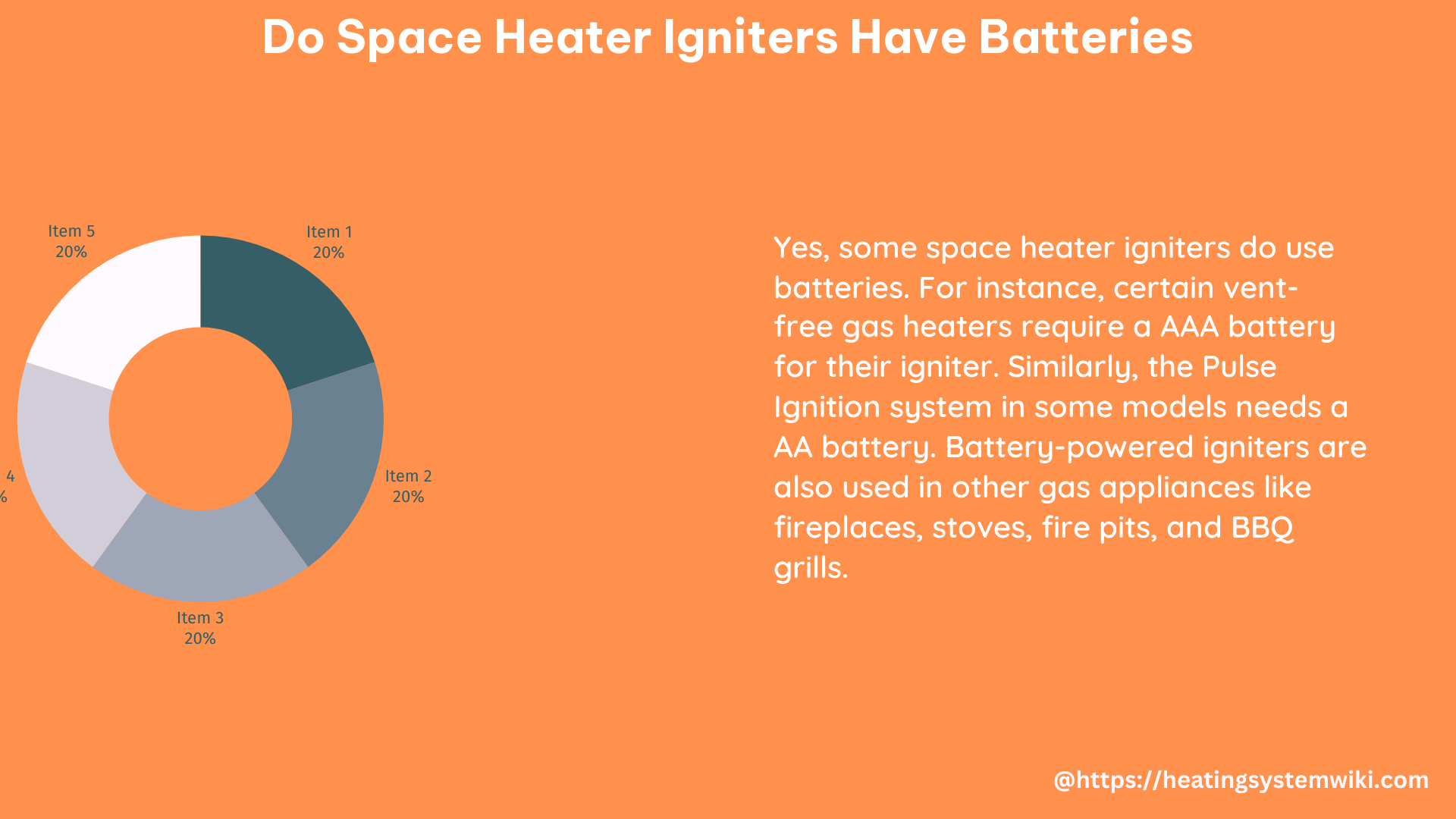Space heater igniters do not have batteries. Instead, they use an electrical current to ignite the fuel. This is because space heaters require a consistent and reliable source of ignition, which batteries cannot always provide. Space heaters typically use one of two types of ignition systems: standing pilot lights or electronic ignitions.
Standing Pilot Lights
Standing pilot lights are less common in modern space heaters due to their inefficiency and safety concerns. However, they can still be found in some older models. These lights are constantly lit and use a small flame to ignite the fuel when the heater is turned on.
The size of the pilot light flame in a standing pilot light system is typically around 0.5 to 1 inch in height. The flame is fueled by a small amount of the main fuel source, such as natural gas or propane, and is regulated by a control valve. The pilot light flame must be large enough to reliably ignite the main burner when the heater is turned on, but not so large that it wastes an excessive amount of fuel.
Standing pilot light systems are less efficient than electronic ignition systems because the pilot light is constantly burning, even when the heater is not in use. This can result in a significant amount of wasted fuel and energy. Additionally, standing pilot lights pose a potential fire hazard if the flame is not properly adjusted or maintained.
Electronic Ignitions

Electronic ignitions, on the other hand, are more common in modern space heaters. These systems use an electrical current to create a spark or glow that ignites the fuel. There are two types of electronic ignitions: surface igniters and spark ignition systems.
Surface Igniters
Surface igniters are heated elements that glow red hot to ignite the fuel. These igniters are typically made of a ceramic material and are powered by a low-voltage electrical current, usually around 24 volts AC or DC. The surface of the igniter heats up to a temperature of around 1,800°F to 2,200°F, which is hot enough to reliably ignite the fuel.
Surface igniters are known for their reliability and long lifespan, with an average expected service life of 10,000 to 20,000 hours of operation. However, they can be more expensive to replace than spark ignition systems.
Spark Ignition Systems
Spark ignition systems use an electrical spark to ignite the fuel. These systems typically consist of an ignition module, a high-voltage transformer, and a spark electrode. The ignition module generates a high-voltage electrical pulse, which is then stepped up by the transformer to create a spark at the electrode. This spark ignites the fuel and starts the combustion process.
Spark ignition systems are generally less expensive to manufacture and maintain than surface igniter systems. However, they may be more prone to misfiring or failing over time, especially in harsh environments or with poor maintenance.
Maintenance and Troubleshooting
It’s important to note that while space heater igniters do not have batteries, they do require regular maintenance to ensure they continue to function properly. This includes cleaning or replacing dirty ignition parts, as well as checking for any malfunctions that may prevent the igniter from functioning properly.
If you’re having trouble with your space heater igniter, it’s best to consult the owner’s manual or contact a professional HVAC technician for assistance. They can help diagnose the issue and provide recommendations for repair or replacement.
Technical Specifications
- Space heater igniters do not have batteries, but rather use an electrical current to ignite the fuel.
- Standing pilot lights are less common in modern space heaters due to their inefficiency and safety concerns, with a typical pilot light flame size of 0.5 to 1 inch in height.
- Electronic ignitions are more common in modern space heaters and use either a surface igniter (1,800°F to 2,200°F) or a spark ignition system.
- Surface igniters have an average expected service life of 10,000 to 20,000 hours of operation, while spark ignition systems may be more prone to misfiring or failing over time.
- Regular maintenance is required to ensure the igniter continues to function properly, including cleaning or replacing dirty ignition parts.
DIY Tips
- Consult the owner’s manual for specific instructions on how to maintain your space heater igniter.
- If you’re having trouble with your space heater igniter, contact a professional HVAC technician for assistance in diagnosing and repairing the issue.
